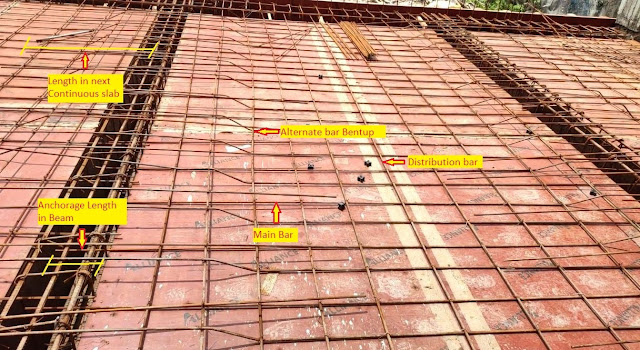Why Crank Bars or Bent-up Bars are Provided in Slabs?
What is bent-up Bar (Crank Bar)?
- When any concrete structural member gets deflected under load, two types of zones develop in the member due to the load. These are the tensile zone and compression zone.
- The concrete material itself is good enough to take the compressive load in the compression zone but the same concrete is very weak in nature and insufficient to bear the tensile load.
- Reinforcement bars are provided at tensile zone (tension fiber) and the same reinforcement bars which are provided in the tensile zones bent up at 45 degrees to the next tensile zone to take the tensile load generally at the supports in beam/slab. Figure: Showing bent-up Bar (Crank Bar) in slab
Tension and Compression Zones
- The concave side upwards is called a Sagging Bending Moment. This kind of bending moment is treated as a positive bending moment.
- The bending moment which causes a beam to bend with the concave side upwards is called a Hogging Bending Moment. This kind of bending moment is treated as a negative bending moment.
Figure: Bending Moment Diagram
- General details of Reinforcement :
- At Support, bent-up bars are provided at L/7 distance
- At Continuous Support, bent-up bars are provided at L/5 distance
Figure: General details of Slab Reinforcement
- To resist negative bending moment (hogging) at the supports
- To resist shear force which is greater at support.
- To reduce the risk of a brittle failure of the slab-column connection
- To reduce the amount of steel used
- For the economization of steel material
watch the video for more details practically on site
Youtube link below













0 Comments